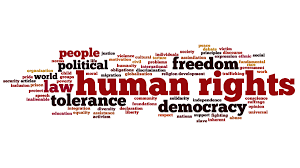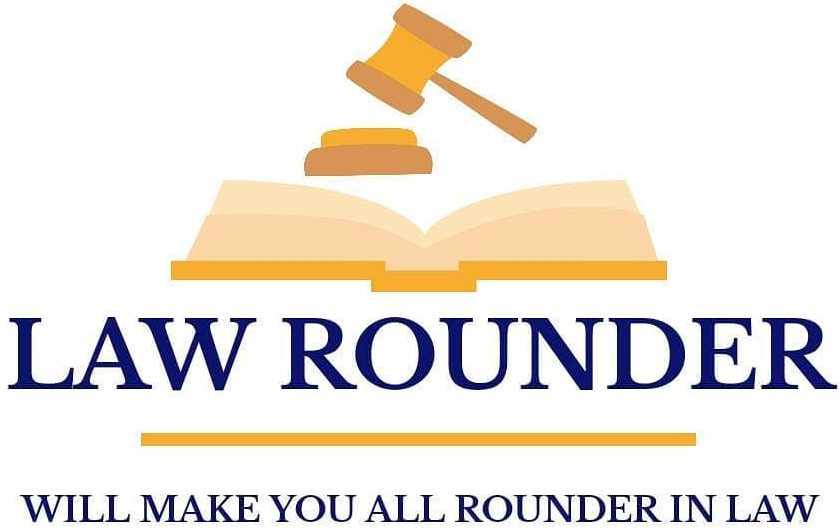

Abstract
The purpose of this study was to investigate international legal protection of human rights in the context of an armed conflict. Armed war has harmed the lives of millions of civilians in recent times. In many armed conflicts, serious violations of international humanitarian and human rights law are widespread. In certain cases, these transgressions may even amount to genocide, war crimes, or crimes against humanity. Human rights law and international humanitarian law complement one other in a variety of ways. Both international human rights law and international humanitarian law give substantial safeguards and assurances for the rights of those who are not actively engaged in conflicts, including civilians. This article examines international human rights legislation and international humanitarian law as tools for assisting victims of armed conflict.
KEYWORDS: International Humanitarian Laws, Armed Conflict, Human Rights
1.1 Introduction
Human rights are often violated, and this is especially true during violent clashes. As a result, specialists have given significant effort throughout the years to the development of devices aimed at relieving human suffering during war and conflict. Human rights law and international humanitarian law (IHL) are mutually reinforcing. Human rights law, refugee law, and humanitarian law are three branches of modern international law that seek to protect victims of conflict. They both attempt to defend human dignity, though in different ways and under different conditions.
Humanitarian law applies in armed confrontation, limiting the activities of parties to the conflict and providing for the protection and human dignity of those who are not participating or cannot participate in the hostilities. Humanitarian law, like international human rights law, defends people’s lives and dignity by preventing torture and cruel treatment, prescribing rights for those facing criminal charges, preventing discrimination, and establishing protections to protect women and children.
The purpose of international human rights law and international humanitarian law is to protect the integrity and humanity of all individuals. Over the years, the General Assembly, the Commission on Human Rights, and, more recently, the Human Rights Council have all held that in times of armed conflict, parties to the conflict have legally enforceable duties to those impacted by the war.
Despite their differences in scope, international human rights law and international humanitarian law both provide a number of safeguards to anyone caught up in armed conflict, whether they are civilians, no longer directly involved in hostilities, or active participants in the fight. Indeed, as acknowledged by international and regional courts, as well as United Nations organisations, treaty organisations, and special processes for human rights, both bodies of law apply to circumstances of armed conflict and offer complementary and partially overlapping protection.
1.2 Sources of International Human Rights Law
While global common freedoms law and global helpful law have diverse historical and theological foundations, both provide the goal of protecting all people and are based on the principles of care for the individual’s life, prosperity, and human poise. From a legal standpoint, both global common liberties law and global philanthropy law have their origins in a series of global agreements that have been maintained and complemented by standard global law.
Given that global basic liberties legislation applies consistently—regardless of whether in concord or in war—and that global helpful law applies exclusively to provided contentions, the two collections of law should be implemented in an integrated and consistently built up way with regards to outfitted conflict. Moreover, other collections of legislation, such as international exile law and domestic law, may frequently be suitable as well, which may affect the type of common liberties securities available.
- International Human Rights Law
The International Human rights law represented, among others, in the Universal Declaration of Human Rights, as well as in many global common liberties agreements and in ordinary international law. The major uni-versal common freedoms agreements are, in particular:
- The International Covenant on Economic, Social and Cultural Rights and its Optional Protocol[1].
- The International Covenant on Civil and Political Rights and its two Optional Protocols[2].
- The International Convention on the Elimination of All Forms of Racial Discrimination[3].
- The Convention on the Elimination of All Forms of Discrimination
against Women and its Optional Protocol[4].
- The Convention against Torture and other Cruel, Inhuman or Degrading Treatment or Punishment and its Optional Protocol[5].
- The Convention on the Rights of the Child and its two Optional Protocols[6].
- The Convention on the Rights of Persons with Disabilities and its Optional Protocol[7].
(B) International Humanitarian Law
International humanitarian law is a collection of decisions that aim to limit the effects of armed conflict on individuals, including ordinary people, those who are not or have stopped participating in the conflict, and, shockingly, persons who still have an identity, such as soldiers. To achieve this balance, global philanthropy legislation encompasses two areas: people insurance and prohibitions on war techniques and plans. Global beneficial law derives from agreements and normal international law. The resultant instruments form the foundation of today’s global compassionate law:
- The Hague Regulations respecting the Laws and Customs of War on Land[8].
- The Geneva Convention (I) for the Amelioration of the Condition of the Wounded and Sick in Armed Forces in the Field[9].
- The Geneva Convention (II) for the Amelioration of the Condition of Wounded, Sick and Shipwrecked Members of Armed Forces at Sea[10].
- The Geneva Convention (III) relative to the Treatment of Prisoners ofWar[11].
- The Geneva Convention (IV) relative to the Protection of Civilian Persons in Time of War[12].
- The Protocol Additional to the Geneva Conventions and relating to the Protection of Victims of International Armed Conflicts (Protocol I)[13].
- The Protocol Additional to the Geneva Conventions and relating to the Protection of Victims of Non-International Armed Conflicts (Protocol II)[14].
1.3 Human Rights requirements and their extraterritorial applicability
The key serious issue that should be addressed is whether there are no after all limitations to the amount of applicability of human rights legislation, and if it applies to all instances of the conflict. This investigation is mostly around the question of the extraterritoriality of human rights commitments.
The problem of extraterritorial obligations is most relevant to global outfitted conflict since it is in such conditions that a State is likely to be operating outside its boundaries. Furthermore, concerns have been addressed as to whether common liberties commitments may extend to operations of State authorities outside the apparent borders of the State, despite the fact that tolerating that common liberties legislation has not evaporated with the flare-up of controversy.
Case law ranging from the Rojava-Islamic Conflict to the ongoing Israleli-Palestinian conflict provides significant support for the idea that human rights duties can extend to places under effective State control. Occupied regions over which clear authority has been established may fall under the purview of the State’s human rights duties. This viewpoint is shared by human rights organisations and was recently declared unequivocally by the International Court of Justice.
It should be noted that accepting that human rights legislation may extend to extraterritoriality does not preclude the idea that if these activities occur in the context of an armed conflict, the meaning of the rights may need to be construed in light of relevant IHL principles.
1.4 Regional and International Jurisdiction
Domestic courts have jurisdiction over offences committed inside their own State’s territory, although territory alone does not determine the bounds of jurisdiction. The legal duties imposed by international human rights and humanitarian law are commonly acknowledged to extend beyond a state’s territory and to any location where the state has authority or control over people. Furthermore, under the concept of universal jurisdiction, a State may—and in the case of severe violations of the Geneva Conventions, must—prosecute accused offenders for specific crimes regardless of the location of the incident or the nationality of the offender or victim. For example: Since the first Indo-Pakistan war in 1947, the disputed status of Kashmir has been a source of contention between India and Pakistan. Since 2013, in particular, ceasefire breaches and border clashes have intensified. As a result, the two nations are still engaged in an international armed confrontation. In light of the escalating severity of violence, India abolished the special constitutional status accorded to Jammu and Kashmir (J&K) by Article 370 of the Constitution in August 2019. Article 370 of the Indian constitution gave special status to Jammu and Kashmir, a region located in the northern part of Indian subcontinent which was administered by India as a state from 1954 to 31 October 2019, conferring it with the power to have a separate constitution, a state flag and autonomy over the internal administration of the state.[15]
1.5 The United Nations’ Enforcement of International Human Rights Laws
The United Nations’ primary concerns are the preservation of peace and the prevention of military conflict. One of the Organization’s primary goals, as stated in Article 1.3 of the UN Charter, is to promote and encourage respect for human rights and basic freedoms for everyone without discrimination. In this regard, the United Nations has an ancient legacy of using both international human rights law and international humanitarian law to protect individuals during times of armed conflict. It recognises that the adoption of important international human rights instruments, such as the Universal Declaration of Human Rights and international human rights treaties, has made a significant contribution to the affirmation of the idea that all are entitled to human rights, whether in times of peace or even in warfare.
- General Assembly
The General Assembly, as the primary norm-creating body of the United Nations, has been actively involved in the establishment of human rights standards, notably the Universal Declaration of Human Rights, from the Organization’s inception. The General Assembly has announced a set of human rights principles and norms pertaining to the rights of marginalised communities.. The General Assembly has also developed standards on the detention, arrest, extradition and punishment of persons guilty of war crimes and crimes against humanity.[16]
- Security Counsil
Since the 1990s, the Security Council has expanded its practise of adding human rights issues in its decisions on armed conflict situations.The Security Council has also on various occasions condemned violations of human rights and humanitarian law in armed conflicts and called for accountability.[17]
(C) Human Rights Council
The Commission on Human Rights and its successor, the Human Rights Council, have historically served as venues for its members to analyse and discuss human rights conditions and concerns. The Human Rights Council’s mandate combined the work of the Commission since 1947.OHCHR’s field-based efforts demonstrate how it meets both international human rights law and international humanitarian law requirements in specific crisis circumstances.
1.6 Conclusion
As stated throughout this research, international human rights law and international humanitarian law are bodies of legislation that are always evolving. Combat is a continually changing phenomenon, thus international human rights law and international humanitarian law must continually adapt to prevent gaps in the protection they give. Applying the rules appropriately and, more significantly, providing appropriate protection to vulnerable groups need a detailed understanding of how these many norms interact and how they complement and complete each other to provide the best level of protection feasible. In terms of complementarity, human rights law and international humanitarian law both inform each other in a variety of ways. As a result of efforts to ensure adequate protection for all persons’ rights in situations of armed conflict, a number of United Nations bodies and organisations, human rights special mechanisms, as well as international and regional courts, have increasingly applied obligations of international human rights law and international humanitarian law in a complementary and mutually reinforcing manner.
1.7 References
- International Legal Protectio of Human Rights in Armed Conflicts, available at: https://www.ohchr.org/documents/publications/hr_in_armed_conflict.pdf (last visited: June 07, 20201)
- Robert J. Delahunty and John C. Yoo, What is the Role of International Human Rights in the War on Terror? Available at: https://core.ac.uk/download/pdf/232966609.pdf (last visited: June 07, 2021)
- Noam Lubell, Challenges in applying human rights law to armed conflict, Available at: https://www.icrc.org/en/doc/assets/files/other/irrc_860_lubell.pdf (last visied: June 07, 2021)
- Carla Ferstman, The Right to Reparation for Victims of Armed Conflict, Available at: https://rb.gy/4fmhuu (last visted: June 07, 2021)
SUBMITTED BY: ANDRE SACHDEVA
[1] The International Covenant on Economic, Social and Cultural Rights
[2] The International Covenant on Civil and Political Rights
[3] The International Convention on the Elimination of All Forms of Racial Discrimination
[4] The Convention on the Elimination of All Forms of Discrimination
against Women
[5] The Convention against Torture and other Cruel, Inhuman or Degrading Treatment or Punishment
[6] The Convention on the Rights of the Child
[7] The Convention on the Rights of Persons with Disabilities
[8] The Hague Regulations respecting the Laws and Customs of War on Land
[9] Geneva Convention (I)
[10] Geneva Convention (II)
[11] Geneva Convention (III)
[12] Geneva Convention (IV)
[13] The Protocol Additional to the Geneva Conventions and relating to the Protection of Victims of International Armed Conflicts
[14] The Protocol Additional to the Geneva Conventions and relating to the Protection of Victims of Non-International Armed Conflicts
[15] Article 370: India strips disputed Kashmir of special status, available at: https://www.bbc.com/news/world-asia-india-49231619 (last visited: June 07, 2021)
[16] Resolution 3074 (XXVIII)
[17] It should be noted that since the 1990s the Security Council has considered that human rights and humanitarian law obligations are to be observed in armed conflicts. For example, in its resolution 1019 (1995) on violations committed in the former Yugoslavia, it “condemn[ed] in the strongest possible terms all violations of international humanitarian law and of human rights in the territory of the former Yugoslavia and demand[ed] that all concerned comply fully with their obligations in this regard”. See also its resolution 1034 (1995).



